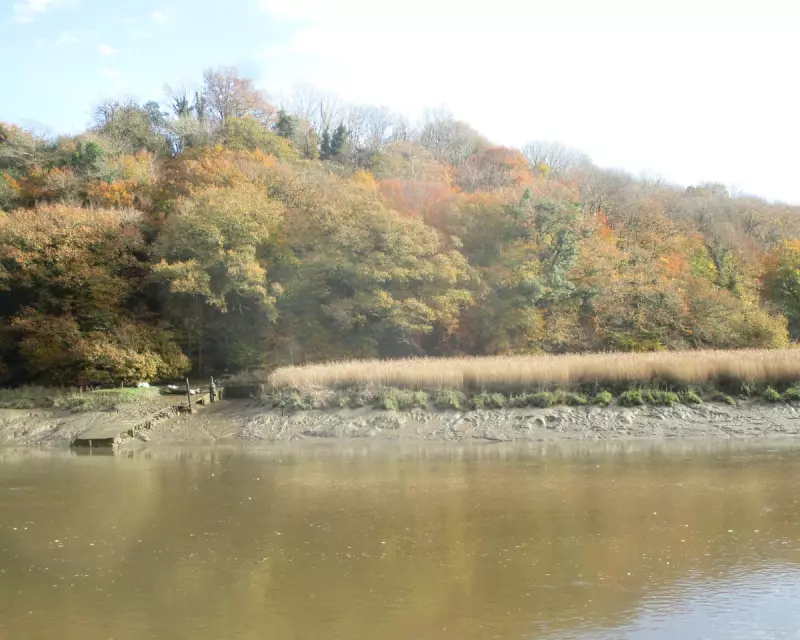
While much of Britain braces for winter's chill, the Tamar Valley in Cornwall remains awash with the golden glow of an unusually mild autumn. The frost has yet to arrive, allowing a spectacular display of colour to persist throughout the landscape near St Dominic.
A Landscape Bathed in Gold
On a dull November morning, the valley is illuminated by yellow leaves clinging to lime trees, their luminosity contrasting sharply with the lichens on a leafless eucryphia tree. The early white camellia remains unblemished by frost, and the local wildlife is making the most of the abundant food supply. Squirrels are bypassing the strawberry-like fruit of dogwoods in favour of richer pickings of berries and nuts.
One of the few signs of seasonal change is a holly tree that has been stripped completely bare of its berries, likely by a passing flock of fieldfares. Elsewhere, blue flowers adorn aromatic rosemary bushes, and the ivy-woven undergrowth shelters violet plants, which will provide essential food for fritillary caterpillars.
Morning Sounds and Rural Life
The tranquillity of the valley is broken just before 8am by the sound of a quad bike, its headlight piercing through the morning mist. On the south Devon side of the river, beef cattle are being moved to a fresh enclosure of grass that is still growing vigorously in the continuing mild spell.
Beyond the gardened areas, the landmark clump of beech trees stands naked, its leaves and mast blown away by recent winds. In a nearby pasture, Dupath farm's Aberdeen Angus bullocks graze contentedly.
Historical Echoes in the Valley
Further downstream, near Cotehele's historic corn mill and the collapsed weir, a different scene unfolds. Tall beech, oak, and chestnut trees rise above a carpet of orange and gold leaves, which are gradually disintegrating into leaf mould.
The high tide temporarily dams the racing millstream, which will soon carry masses of leaves and eroded earth—washed down from the steep lanes by yet more heavy rain—toward the tidal River Tamar.
This natural cycle of decay and movement has a deep historical significance in the valley. Before the advent of artificial fertilisers, rotting leaves were a valuable source of organic nourishment. Known locally as "point stuff," these accumulated leaves were shovelled off the mudbanks at low tide during autumn and winter.
They were then loaded into boats and floated toward quays before being carted away to spread on the valley's intensively cultivated market gardens. This practice supplemented other fertilisers like dock dung from Plymouth and Devonport, and limestone that was shipped upstream to be burned in riverside kilns.
Today, the scene at Cotehele Quay, with its mudbanks and woods, stands as a beautiful reminder of this enduring relationship between the Cornish landscape and those who have cultivated it through the seasons.





